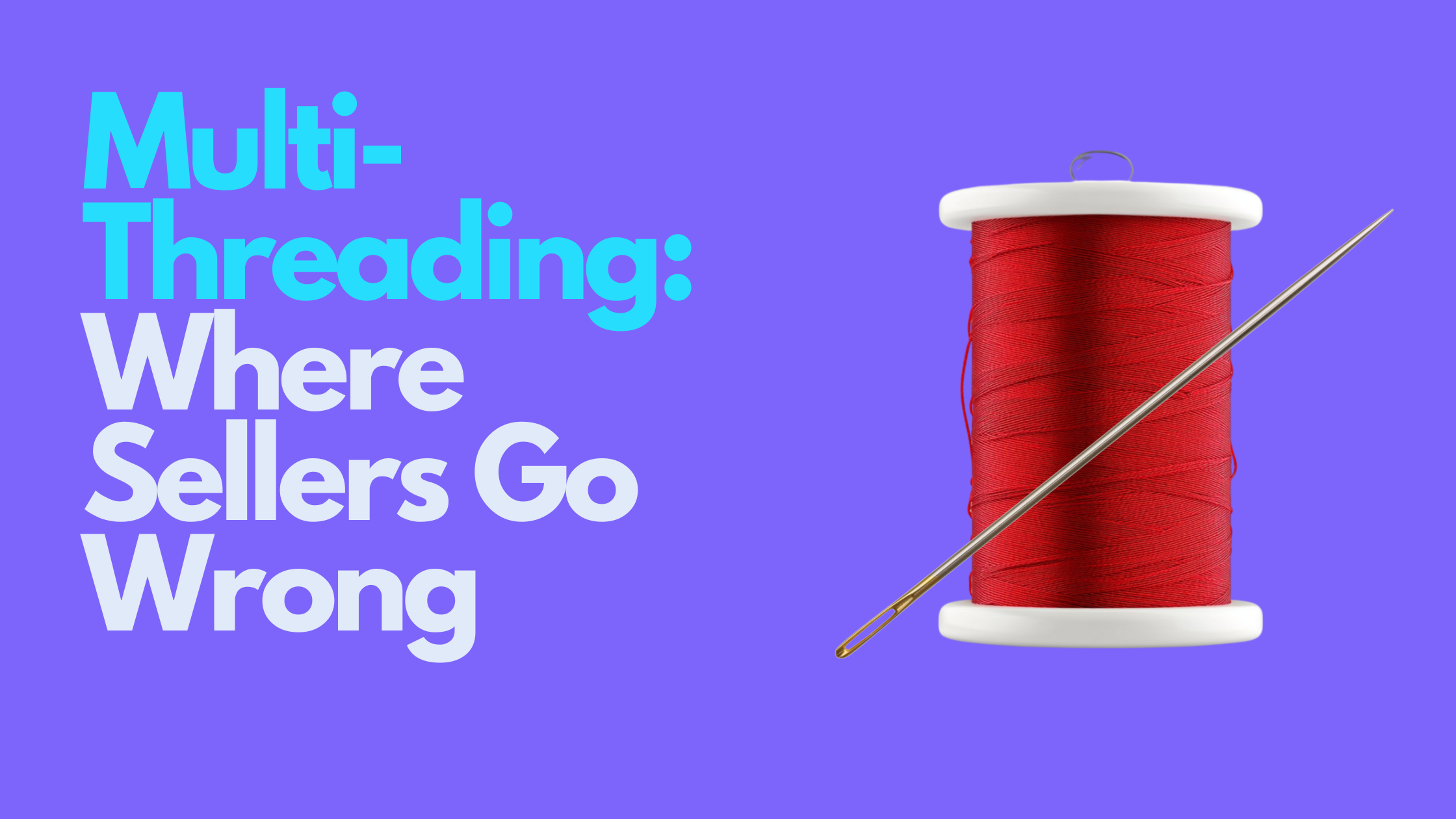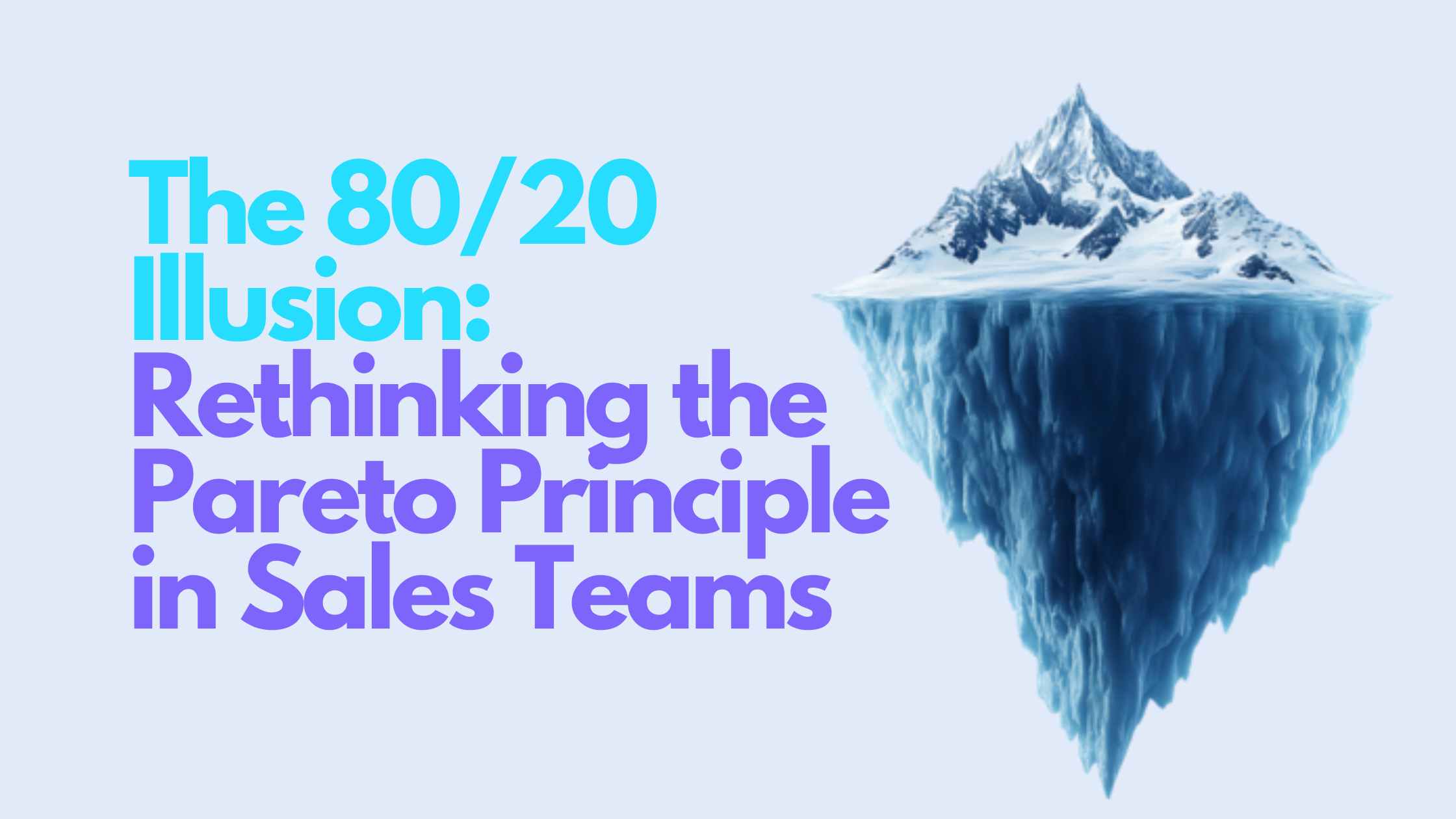Reading Time: 5 minutes
Subscribe
Get the latest Flow State content delivered to your inbox
You can unsubscribe at any time. Privacy Policy.
Multi-threading in sales—engaging multiple stakeholders within a target company—is often presented as a silver bullet for complex deals. In theory, it reduces risk, builds broader buy-in, and prevents deals from collapsing when a single champion goes quiet. Yet many salespeople attempt multi-threading and still lose deals. The reason? They get it wrong.
Despite good intentions, most reps either approach multi-threading too aggressively, too passively, or too late. They engage the wrong people, fail to adapt their messaging, or create internal friction that stalls the deal rather than accelerating it. Here are five of the most common mistakes salespeople make when trying to multi-thread.
1. Relying on a Single Contact for Too Long
Many salespeople think they are multi-threading when they aren’t. They build a strong relationship with one contact—usually their champion—and assume that’s enough. They may ask for introductions to other stakeholders, but if their champion drags their feet, they wait rather than finding alternative ways in.
By the time they realise they need to engage finance, IT, or procurement, they are on the back foot. Suddenly, new objections appear, timelines get pushed, and the deal stalls. Research from Gartner shows that 75% of B2B deals involve at least six stakeholders, yet many salespeople still attempt to close deals with just one or two contacts. The best salespeople don’t treat multi-threading as a last resort when a deal is at risk; they do it from the start.
2. Engaging the Wrong Stakeholders
Not every stakeholder is relevant to the deal, and some will actively slow it down. A classic mistake is reaching out to anyone with a relevant job title without understanding their influence. Salespeople waste time on mid-level managers who have no decision-making power or engage legal and procurement too early, triggering processes that add unnecessary complexity.
According to research from Gong, deals where salespeople engage with at least three key stakeholders are more than twice as likely to close compared to those with only one point of contact. That doesn’t mean adding names at random. Influence mapping is critical. Rather than guessing who matters, sales reps should use LinkedIn, previous deal insights, and direct conversations to understand who actually drives decisions. A well-placed email to the right person can be far more effective than a dozen meetings with the wrong ones.
3. Not Getting an Executive Voice in the Room
Many deals stall because the person driving the decision doesn’t have the authority to sign off on it. Salespeople spend weeks engaging managers and directors, only to discover that a C-level executive needs to approve the deal—and that executive has never been part of the conversation.
Without executive sponsorship, deals either grind to a halt or get deprioritised in favour of bigger strategic initiatives. Senior leaders don’t just have final sign-off; they often have the ability to fast-track decisions, unlock budget, and remove internal roadblocks. According to Forrester, executive involvement increases the likelihood of closing a deal by 80%.
The best salespeople make sure an executive voice is involved early, even if it’s just a short conversation. A well-timed introduction from their own leadership team to the prospect’s C-suite can make a significant difference. Deals where an executive is engaged from the start are far more likely to close than those that rely on middle management to push them through.
4. Pushing Too Hard and Creating Internal Friction
There’s a fine line between proactive multi-threading and being seen as a nuisance. Some salespeople, eager to cover their bases, start reaching out to multiple stakeholders at once without thinking about internal dynamics. They blind-copy executives on emails, go over their champion’s head too early, or contact people who aren’t yet aware of the project.
This approach can backfire spectacularly. If internal stakeholders feel bypassed or blindsided, they may push back against the deal out of frustration rather than logic. A champion who initially supported the deal may withdraw because they feel their authority has been undermined.
This is a bigger issue than many realise. RAIN Group found that 58% of stalled deals happen because internal misalignment slows decision-making. Effective multi-threading requires diplomacy. It’s often better to gain quiet buy-in before escalating conversations, rather than trying to force momentum through sheer volume of outreach. Salespeople should be intentional, not indiscriminate, about who they engage and when.
5. Losing Control of the Narrative
One of the biggest dangers of multi-threading is allowing different stakeholders to form their own, sometimes conflicting, opinions about the solution. When a sales rep isn’t in control of the narrative, finance might see it as an expense rather than an investment, IT might view it as a security risk, and leadership may question the urgency.
A study by Challenger found that 94% of buying committees struggle to reach a consensus internally, which means the risk isn’t just in failing to engage multiple people—it’s in failing to align them. Salespeople who multi-thread effectively ensure that every stakeholder is aligned on the core value of the solution. This doesn’t mean controlling every conversation, but it does mean equipping champions with the right information, pre-empting concerns, and ensuring that messaging remains consistent across the organisation.
The moment different stakeholders start having separate conversations about whether the solution is necessary, the deal is in danger. The best salespeople don’t just connect with multiple people; they actively guide how those people talk about the solution internally.
Why Multi-Threading Needs to Be Strategic
Multi-threading isn’t just about talking to more people—it’s about talking to the right people in the right way at the right time. Salespeople who get it wrong treat it as a box-ticking exercise, sending out emails to anyone with a relevant job title or engaging too late in the process. Those who get it right take a more strategic approach, mapping influence, tailoring messaging, and ensuring that internal conversations are working in their favour rather than against them.
Getting it right starts with a clear plan. Before multi-threading, salespeople should understand the full buying committee, identify who actually influences the decision, and determine the best way to engage them. If a VP of Sales is the champion but the CFO controls the budget, the messaging for each needs to be different. If IT has the power to delay or kill the deal, their concerns need to be addressed proactively. Every interaction should have a purpose, whether it’s securing buy-in, handling objections, or aligning decision-makers on next steps.
Timing matters. Engaging an executive too early without an internal champion can make it seem like the deal isn’t mature enough. Engaging them too late risks a veto when the team is already invested. The same applies to procurement and legal—bringing them in at the wrong stage can either slow a deal unnecessarily or cause last-minute headaches that could have been avoided with earlier alignment.
Sales teams that make multi-threading a structured part of their process tend to outperform those that leave it to chance. Review deals regularly to assess whether the right stakeholders are engaged. Use CRM data to track interactions and spot gaps where key decision-makers haven’t been brought in. Leverage leadership and internal experts to support sales conversations at the right time.
With buying decisions becoming increasingly complex, mastering multi-threading is no longer optional. It’s the difference between deals that stall and deals that close. The salespeople who win don’t just know who to talk to—they know when to talk to them, what to say, and how to guide the deal through to a decision.



